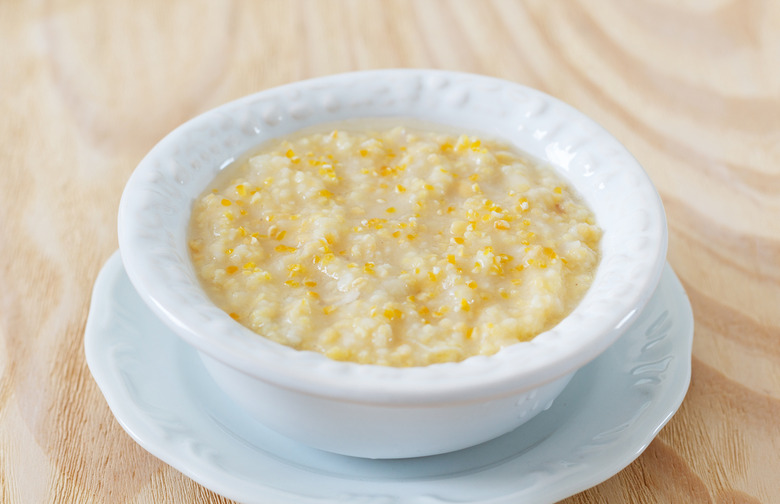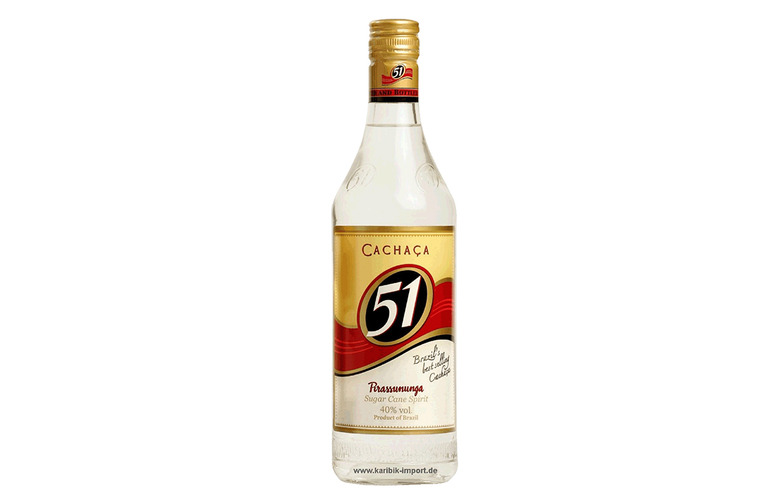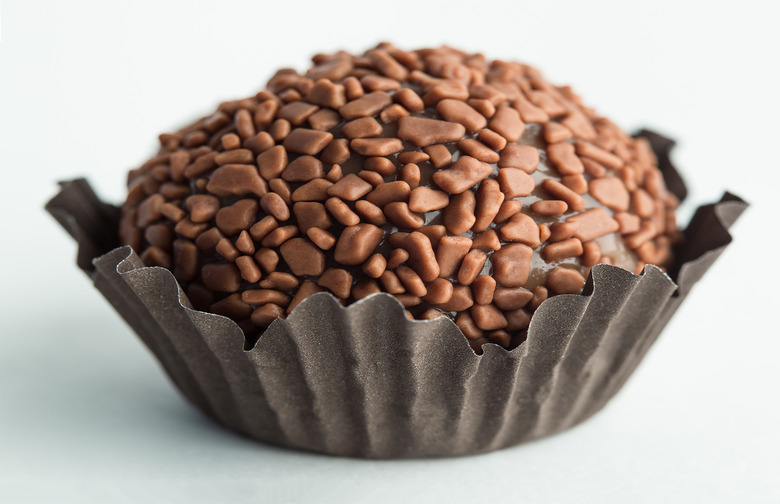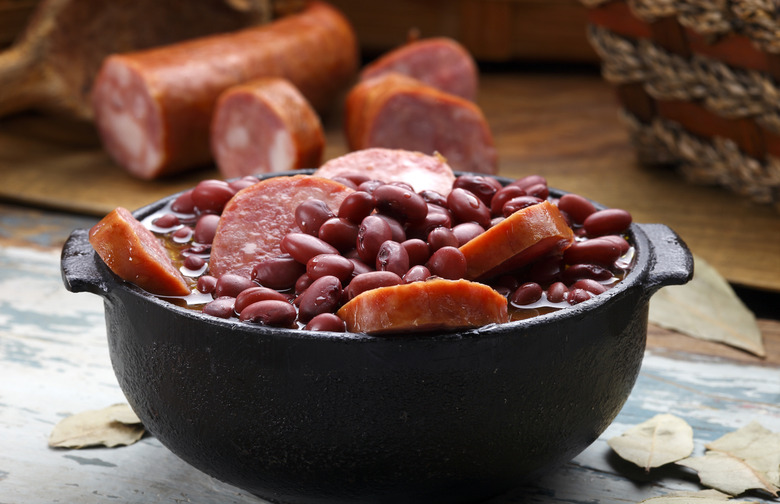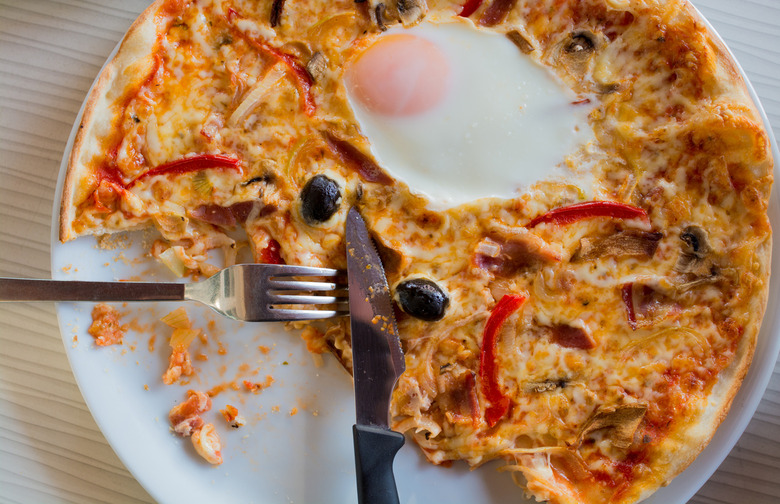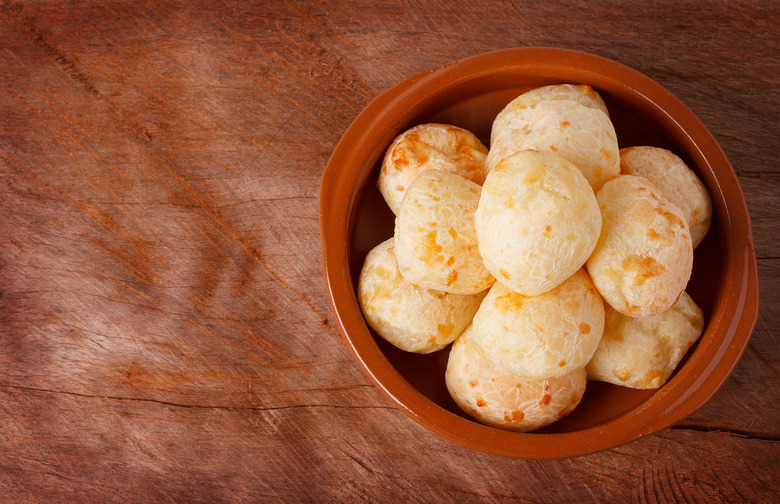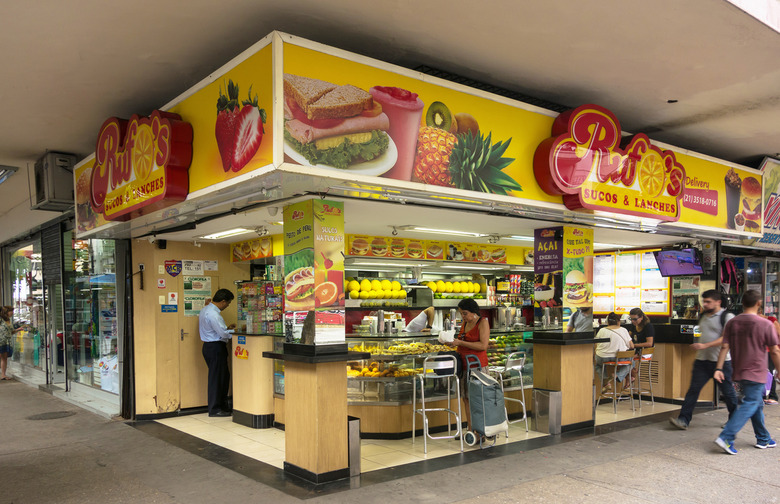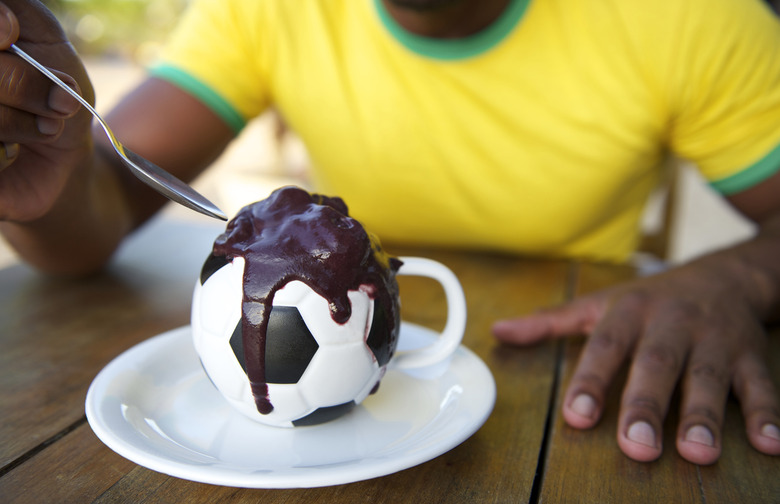10 Things You Need To Know About Brazilian Food And Drink Before The Olympics (Slideshow)
You're probably familiar with "Brazilian barbecue" or "Brazilian steakhouse" restaurants in America, where waiters walk around with giant hunks of meat waiting to slice off pieces for hungry patrons. Although it seems like a gimmick, barbecue in Brazil (called churrasco) is actually an important part of the regional diet. Churrasco uses a variety of meats like beef, pork, chicken, and sausage that are cooked over a large "churrasqueira" charcoal barbecue grill. This term can also refer to the chef, and a similar term, "churrascaria," also refers to a steakhouse or other barbecue restaurant. The barbecues themselves usually have supports for spits or skewers, and often have nothing separating the meat and the embers. Beef is the most common meat prepared, and it is usually marinated in lime, lemon, or other juices mixed with garlic for several hours before getting seasoned with salt.
Breakfast: Not the Most Important Meal of the Day
Breakfast is a crucial part of any diet, and Brazilians share some traditional foods with other countries, like eggs, toast, cereal, and fresh fruit, but locals usually pass on heavy or rich dishes featuring an abundance of meat, loads of cheese, and most things that could also pass as dessert. Aside from lots of fruit, favorite dishes instead include pão d'água (bread that's crunchy on the outside and soft on the inside, often served with guava paste and a bit of mozzarella cheese), creamy polenta, and banana sponge cake. Breakfast is generally on the light side, because lunch is actually seen as the most important meal of the day.
Make your own banana sponge cake at home with this tasty, easy recipe.
Cachaça Is Your New Best Friend
Cachaça is a distilled spirit made from sugarcane juice, and is also known by the names aguardente, pinga de tuto, and caninha. The drink has been around since 1532, when sugar cane first arrived in Brazil from Madeira. Today, almost 400 million gallons are consumed in the country annually, which is 99 percent of the total production. Like rum, cachaça has two varieties: unaged (white) and aged (gold), with the former generally used for mixing into cocktails, and the latter meant to be drunk straight. The national cocktail of Brazil, the caipirinha, is a simple drink that combines cachaça, a couple spoons of sugar, and half a lime.
Although cachaça is the alcohol of choice in Brazil, it still doesn't come close to the popularity of their overall national drink...
Coffee Is the National Beverage
Aside from water, coffee is the probably the national beverage of a lot of countries (especially in the morning) — but Brazil is in a league of its own. In fact, about one-third of the world's coffee comes from Brazil, making it the world's largest producer by far. The country has held this distinction for the last 150 years (at one time supplying 80 percent of the globe's coffee), beginning when the crop first arrived in the 1700s. Brazilians today also drink more coffee than anyone else in terms of total consumption, altogether consuming almost 5 billion pounds of raw coffee per year. Many residents have no problem having a strong cup right before bed! Although iced coffee as well as lattes, cappuccinos, and other milk-heavy drinks have slowly infiltrated the country in recent years, most Brazilians still take coffee strong, hot, and black.
If you happen to visit, the important terms for ordering are cafezinho (plain coffee in a small cup) and média (the Brazilian version of a latte).
Don’t Forget About Dessert
You'll probably be stuffed after gorging on delicious dinner dishes, but dessert deserves some attention too. If you see little chocolate sprinkle-covered chocolate balls, these are called brigadeiros, and they simple must be tried. Also known as a "Brazilian truffle," brigadeiros are made from condensed milk, powdered chocolate, and butter, and these little treats as so delicious you'll be tempted to eat the mixture right out of the pot. (Don't worry, we won't judge you.) Additionally, cajuzinhos ("little cashew" in English) are an almost ubiquitous nut-and-sugar confectionery, while coconut-based desserts like cocadas and beijinho also need to be sampled, the latter of which is basically the coconut version of a brigadeiro.
Feijoada Is the National Dish
Feijoada is not only the national dish of Brazil, it's the regional dish of Rio de Janeiro. But what the heck is it? Feijoada, at its core, is a hearty dish that consists of beans and salted pork or beef, and often includes vegetables too. The exact ingredients can vary though. The beans might be black, brown, or red. The meat could include bacon, smoked ribs, pork trimmings, smoked sausage, or jerked beef. The vegetables can be everything from carrots and cabbage to okra and kale. Feijoada is commonly served with rice; it is often associated with holidays, celebrations, and other events, but it can also just be a solid midday meal. In the end, it's the national dish, so there's really no wrong way to eat it.
Looking to make your own feijoada at home? Try this delicious recipe.
Pizza Time!
We know what you're thinking (because we initially thought it too): "Why is an Italian dish in a list about Brazilian food?" Well, for starters, pizza is immensely popular in Brazil. In fact, it's one of the most popular types of restaurants in the entire county. But it's the serving style that really makes eating pizza in Brazil a unique experience. At some restaurants, waiters will come around numerous times with a selection of slices and serve individual pieces to customers. This is called "rodizio style." By the way, in Brazil it is customary to use a knife and fork when eating pizza, so be prepared for that.
Say Cheese (Bread)!
Pão de queijo ("cheese bread" in Portuguese) is classic Brazilian comfort food that combines eggs, cassava flour (from the root that also produces tapioca flour), and grated cheese into a bready, spherical treat. Unlike a lot of food in America, this enormously popular snack isn't stuffed with cheese, but instead has the ingredient mixed right into the batter. (And note that because it's made with cassava flour, it's gluten-free.) Similar foods (with different names) can be found in neighboring countries like Bolivia, Colombia, Argentina, and Paraguay, and it also made the jump across the pond to Japan with a version made with rice flour instead of tapioca.
The Lowdown on Going Out for Lunch and Dinner
When dining out at lunch or dinnertime, there are two types of restaurants to consider: sit-down or self-service, the latter of which is similar to a buffet. Self-service restaurants often only operate during lunch, which is called almoço. Which means when dinner (called jantar) rolls around, you may have to opt for a restaurant with a menu (called a cardápio). When at this type of establishment, you should pay attention to the serving sizes specified, as they are often served and priced for two people.
The Restaurants Are Phenomenal
If you're not yet convinced that Brazil offers some of best cuisine in the world, you need only look at the shockingly large amount of high quality, award-winning restaurants within its borders on our 101 Best Restaurants in Latin America and the Caribbean list. Or, for even more of the best eats in Brazil, we recently did a separate list of the 20 Best Restaurants in Brazil. Now go forth and eat!

